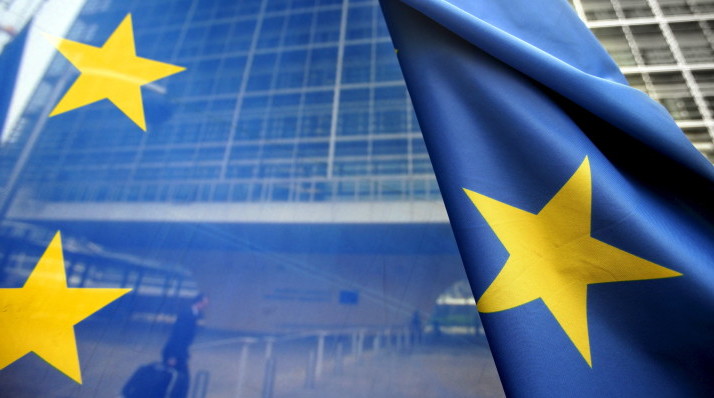
[authorbox authorid=”45″ ]
In turbulent times for the European Union when some nations see the building of walls as a necessity while for others it is a symbol of the dark age of the Iron curtain, there is one physically invisible wall which starts to crack – the EU Transparency wall.
“Transparency” – a key word for the EU politicians but also a foggy term for the citizens of Europe. When decisions are not taken in the most transparent way or are wrongly communicated, people turn their backs to the outcomes of these policy choices and open their minds to populists as the rise of the votes for far-right and radical left parties in the recent years has proven that to be the case.
However, under the pressure from the civil society and by wisely reconsidering its stance, the EU institutions have started the slow demolishment of that wall. Transparency will hardly find its place in the upcoming State of the Union Speech (SOTEU) by Jean-Claud Juncker but, in practice, it will underline the political moves in every sector – migration, jobs and growth, Eurozone governance.
EU citizens crave to take influential role next to lobbyist and to have a transparent view of the whole political process but as recent research shows, transparency can be counterproductive by leading to more corruption or bad policies. That’s why the EU institutions are trying to keep the necessary balance between preserving their independence but also staying accountable and transparent enough.
Let’s check what the status quo in the field of good governance and transparency across the EU institutions is.
European Commission
The good, the bad and the ugly institution of the EU, depending what information you request from it, has faced a fierce criticism for disclosing only partially the Commissioners’ travel expenses. Another blow for the EC is also that the European Ombudsman, EU ethics watchdog, opened a join investigation concerning the EC’s Ad Hoc Ethical Committee which deals, in particular, with the post-mandate jobs of the Commissioners (the Baroso scandal).
Consequently, it is expected that the European Commission will present a revision of its code of conduct, with stricter revolving door rules. On the other hand, the European Commission with its Transparency register for lobbyist is leading by example. Thus, the recently started trialogue with the Council and the European Parliament on its proposal for an inter-institutional agreement on a mandatory Transparency Register is something that needs admiration.
European Parliament
It is a quite transparent institution where almost all meetings and plenary sessions are live streamed and people can send their petitions to a special committee dealing with them. Nevertheless, at its annual self-audit, 423 of 751 MEPs voted against mandatory publication of the way they spend the €4,342 per month they receive to cover the cost of office(s), computers, telephones, and other office-related expenses. Under the current rules, MEPs receive the taxpayer-funded €52,000 per year as a monthly lump sum, without having to publish any receipts or justification of how the money is spent.
The Council
The Council is more reluctant when it comes to openness in comparison with the EC and EP but the NGOs and the European Ombudsman are insisting that a stable and mandatory transparency register is necessary for the meetings of the government representatives. One NGO and MEP de Jong complaint to the European Ombudsman because the Council did not disclose the legal opinion of its lawyers for the legal basis of the envisaged Transparency register.
Court of Justice of the EU
Definitely, ECJ has been the most prominent actor in developing the concept of Transparency. When public access to certain controversial documents is not given, very often the applicants seek Court’s help as a remedy of last resort. This summer, the ECJ ruled in the Breyer case that the EC cannot refuse access to written submissions of the Member States in the EC’s possession it. The ECJ confirmed that it is subject to the system of access to documents of the institutions only when exercising its administrative tasks. In this context, it referred to its own public access regime, which thus excludes documents related to the ECJ’s judicial activity. As a follow up, the European Commission was bombarded by public access requests for MS pleadings in different cases. So, Breyer definitely opened the floodgates.
The European Central Bank
ECB is also subject to different public access regime which is normal since it deals with quite sensitive information when fulfilling its role of sole supervisor of the EU biggest banks. ECB made a positive step by publishing the list of securities held by the Eurosystem under the ECB’s CSPP. It also publishes the monthly meeting calendars of its Executive Board members, with a lag of about three months. To satisfy the need of even more openness, ECB published the text of the Emergency Liquidity Assistance (ELA) agreement which aims to provide central bank money to solvent financial institutions that are facing temporary liquidity problems, outside of normal Eurosystem monetary policy operations.
The way forward?
The European Union is about the change in the near future but its people, organized in various NGOs, will continue to pursue open access to information and documents of the institutions. This can only enhance the process of EU metamorphosis by boosting the trust in the institutions. As Jeremy Bentham has said ‘Without publicity, no good is permanent. Under the auspices of publicity, no evil can continue’ and that ‘The efficacy of this great instrument extends to everything – legislation, administration, judicature’.



